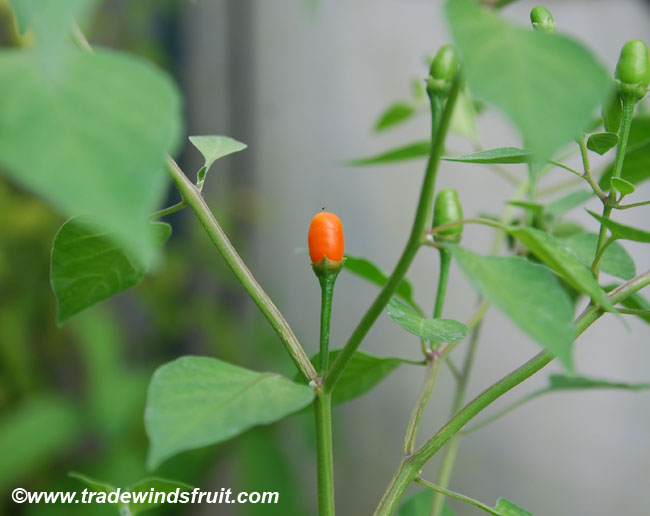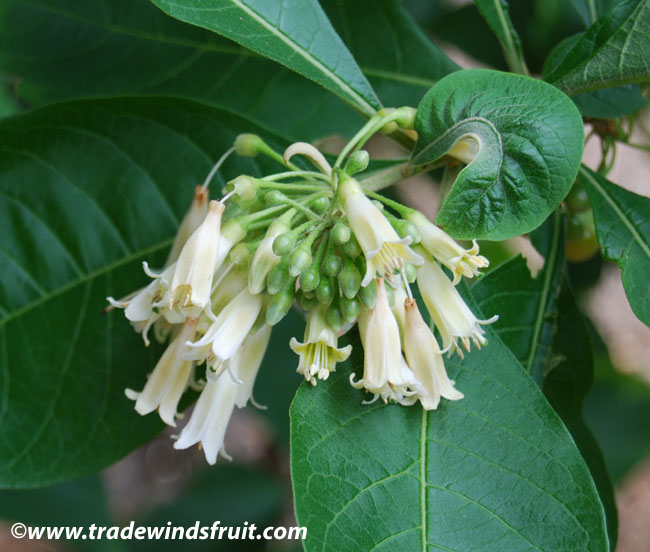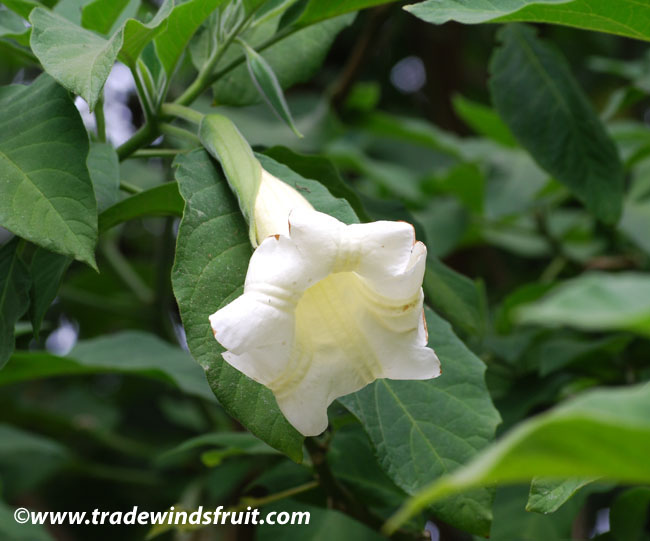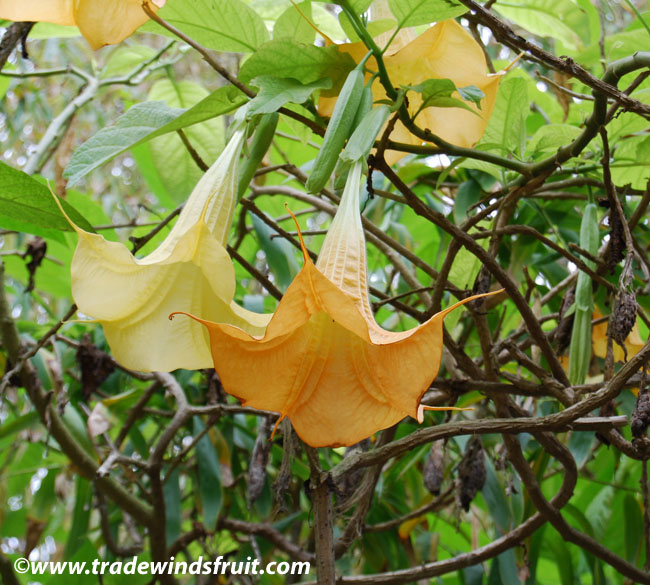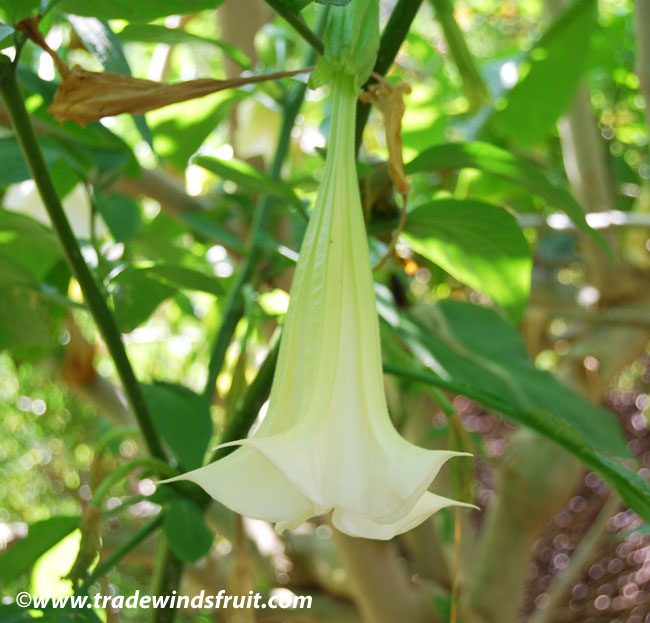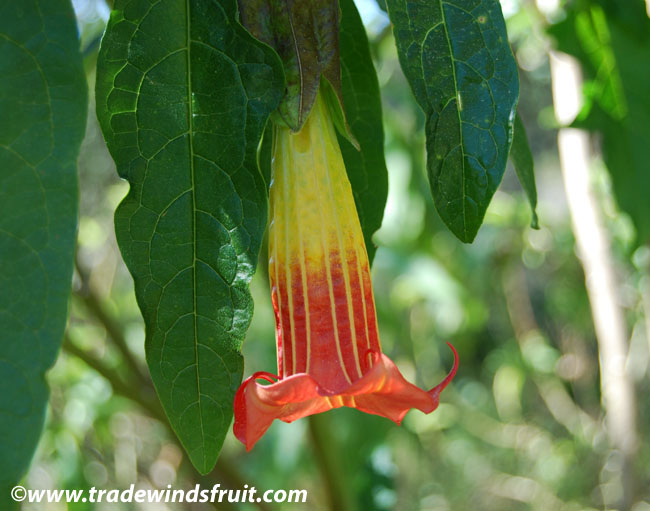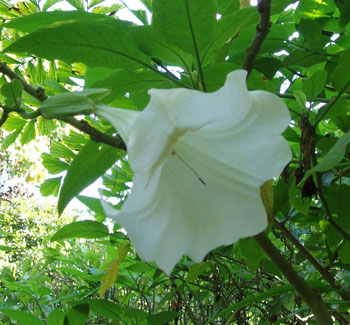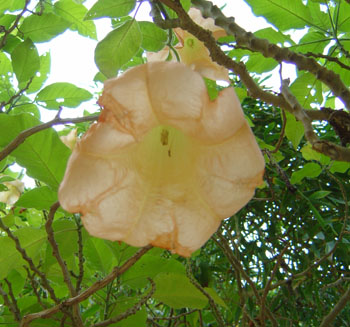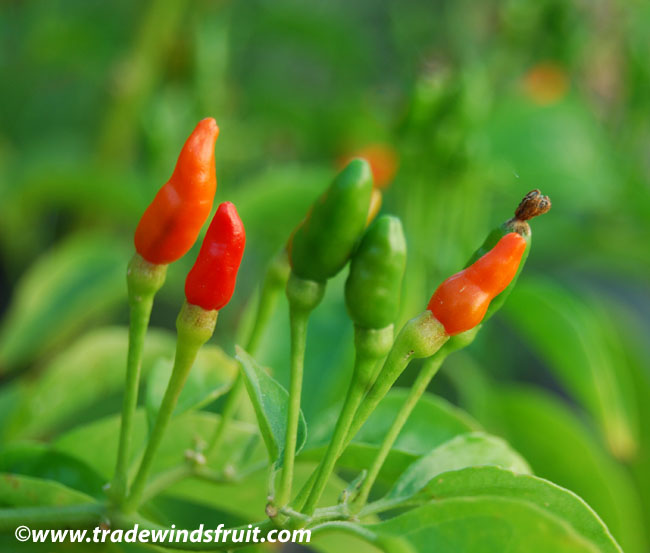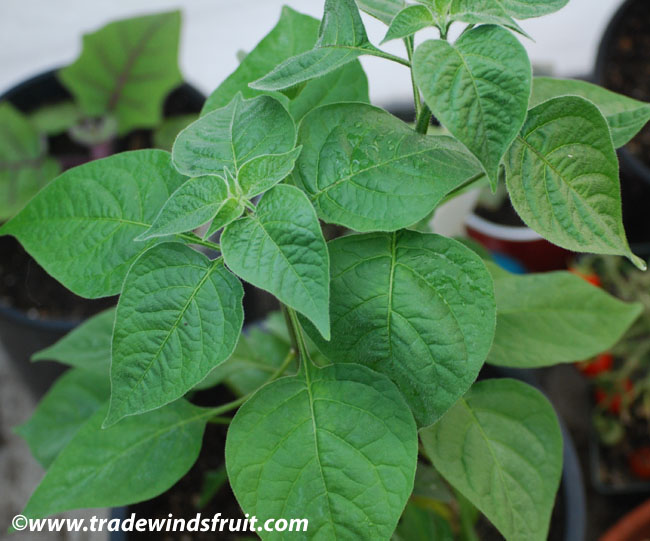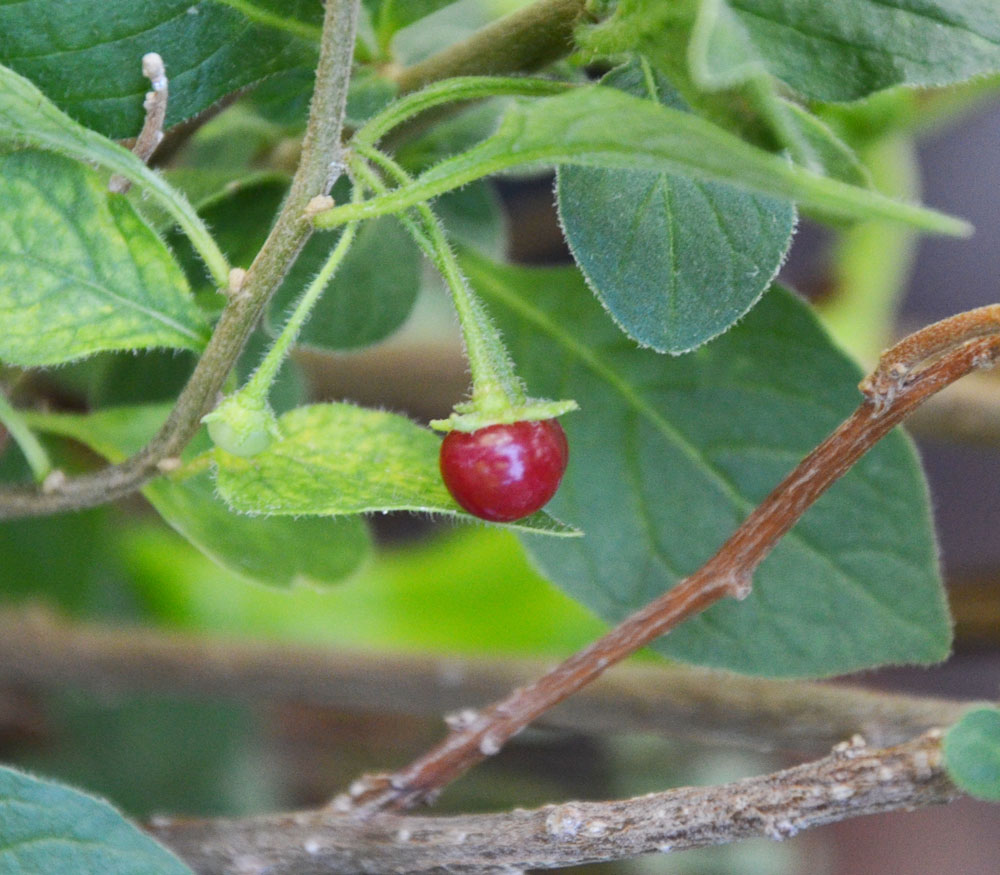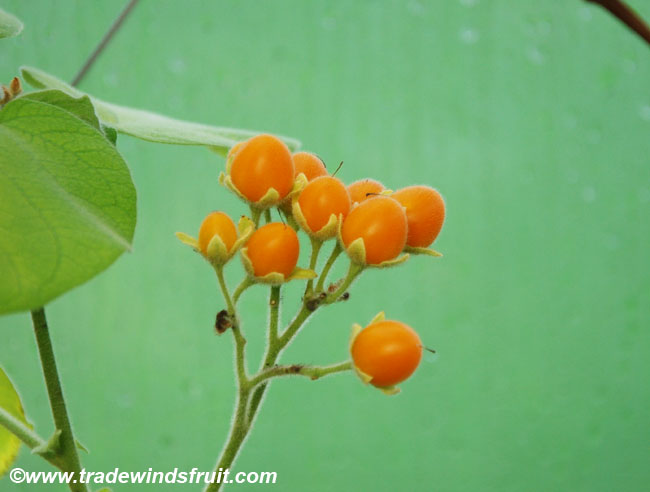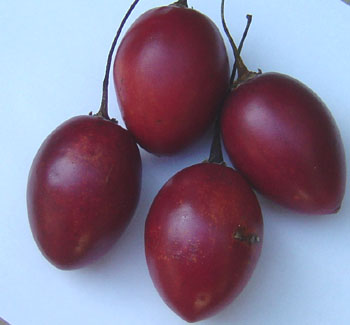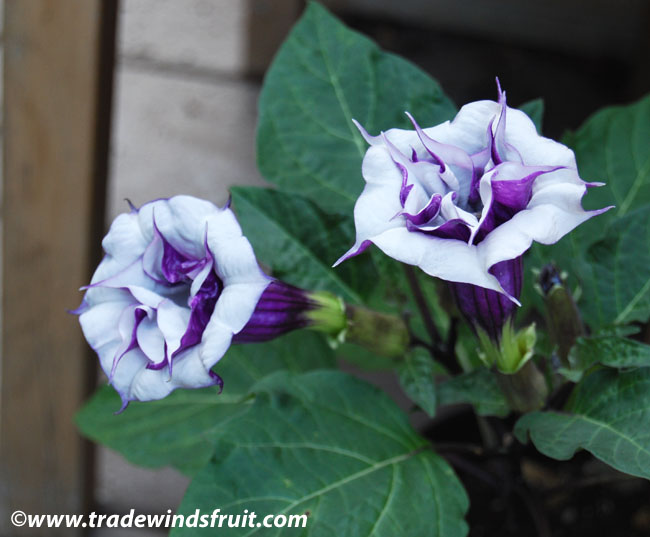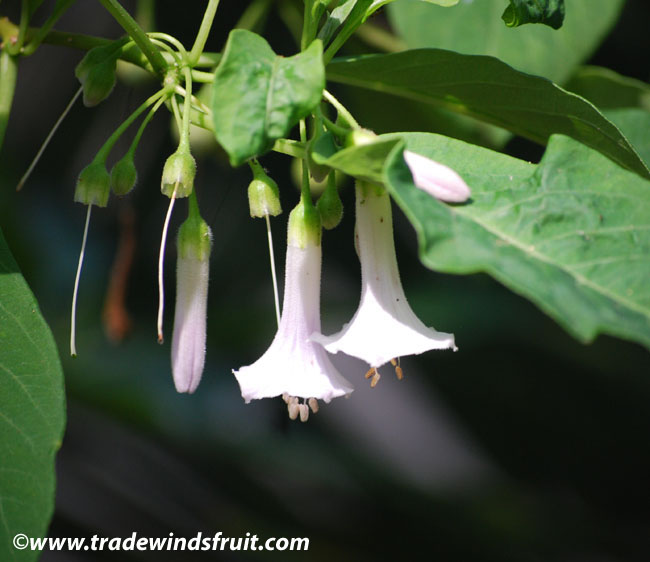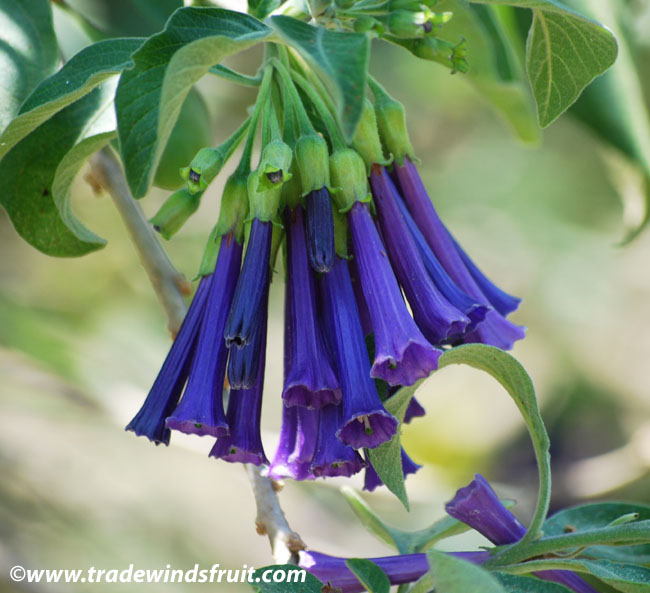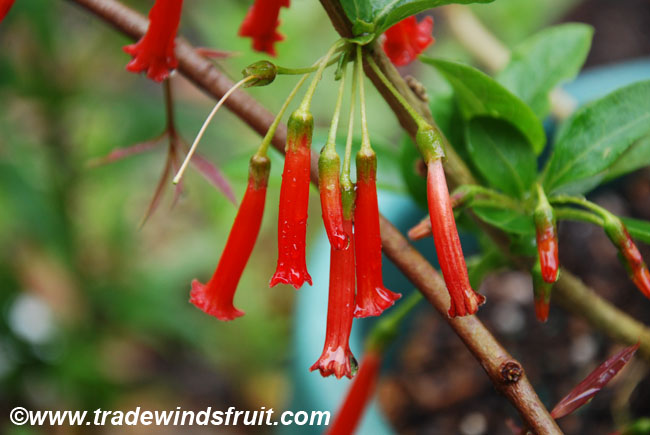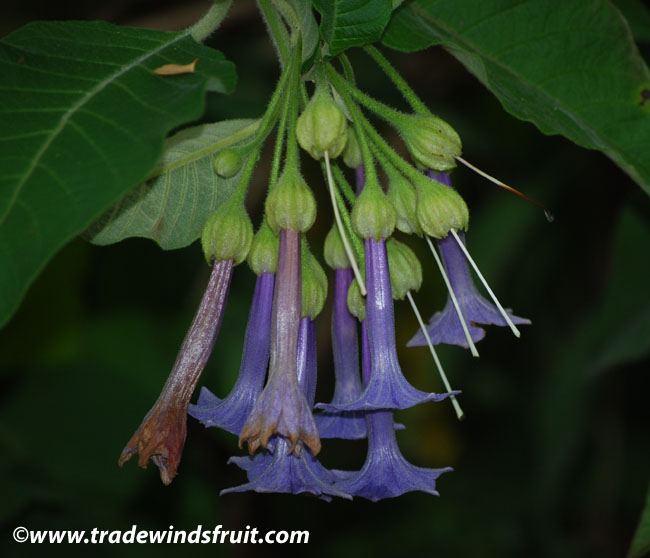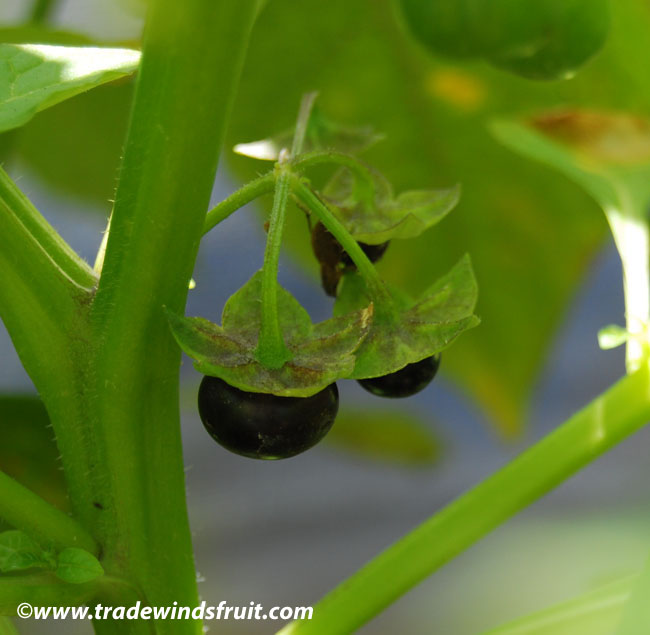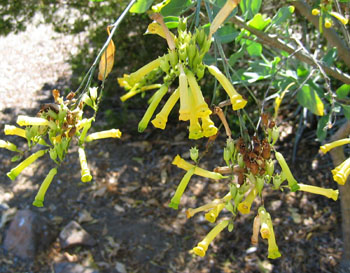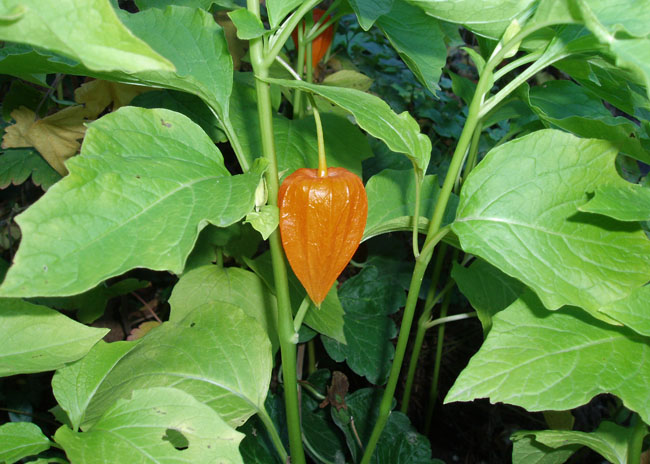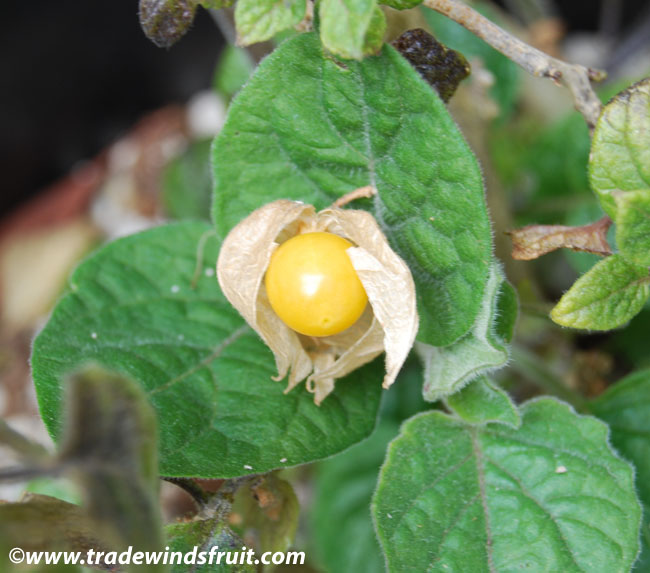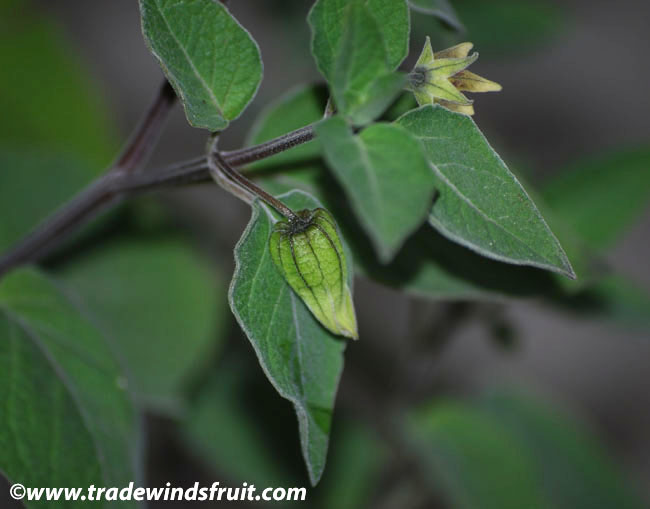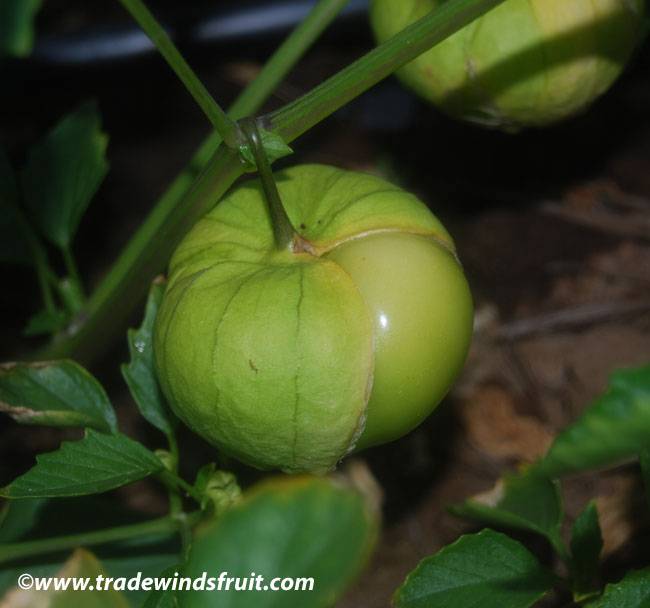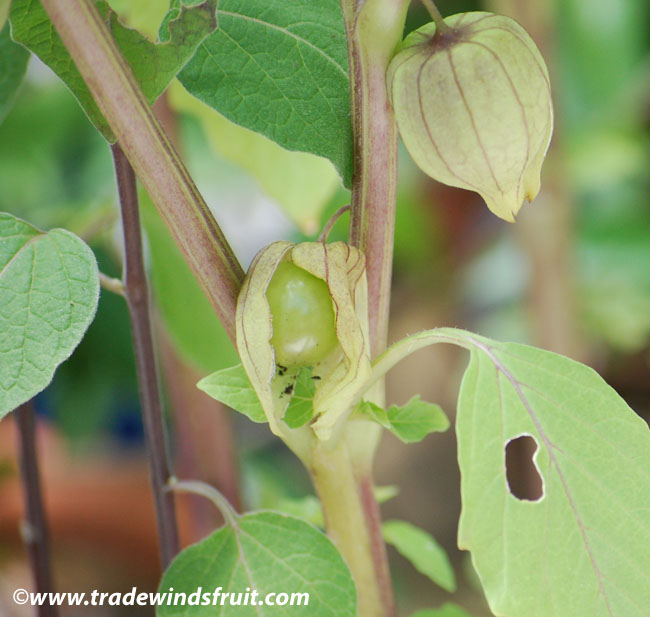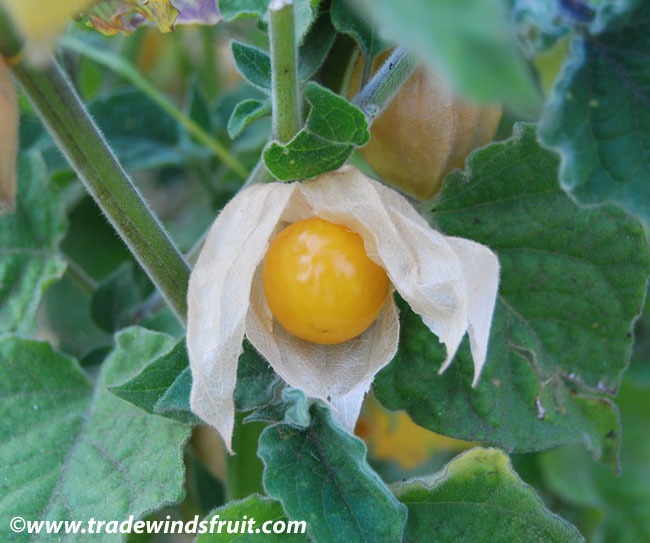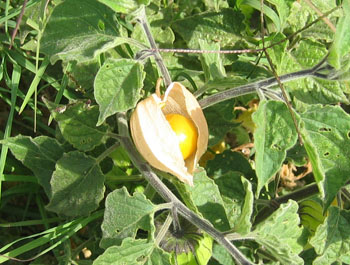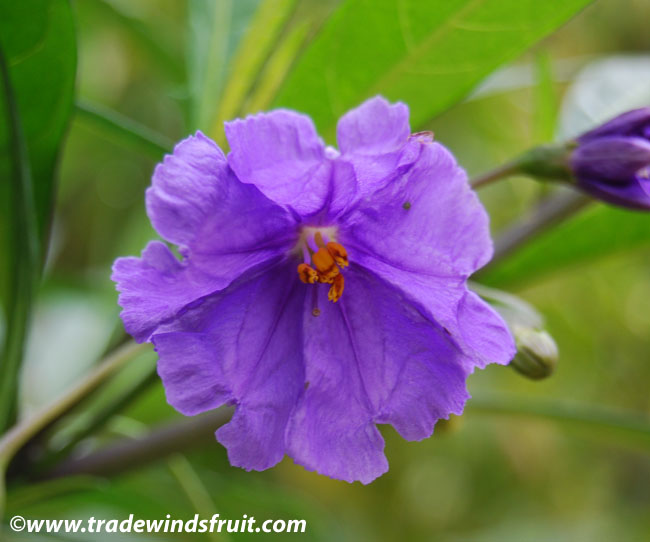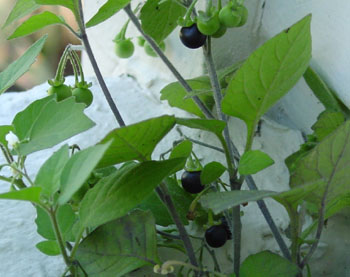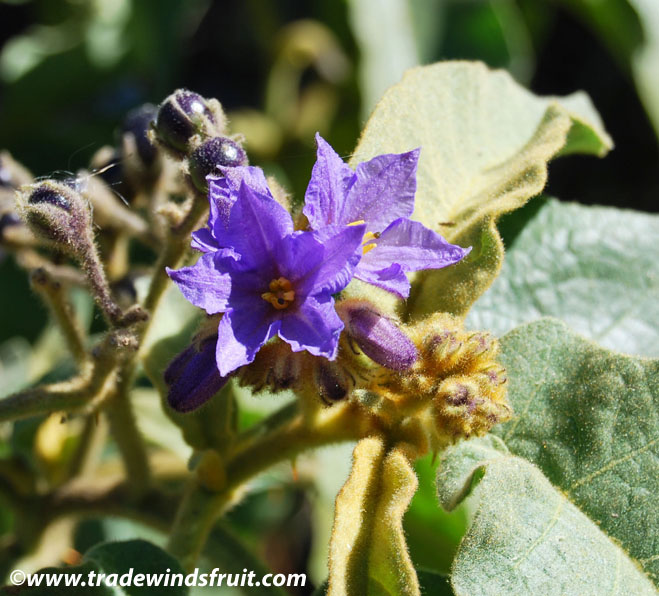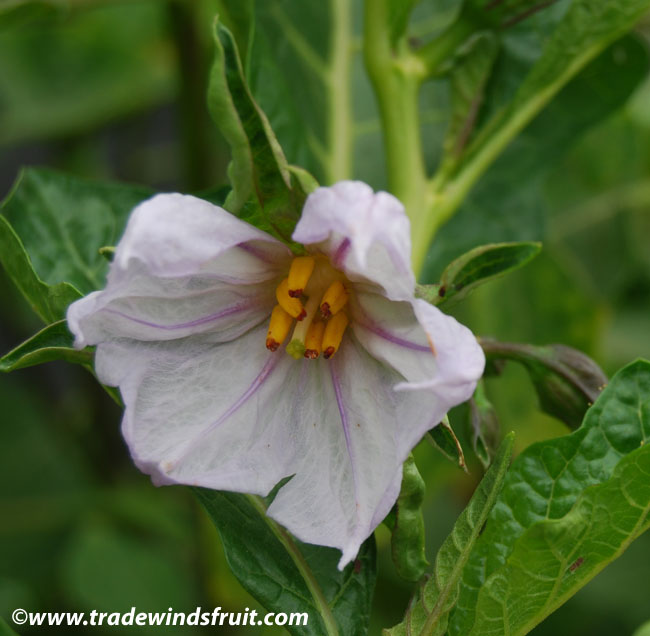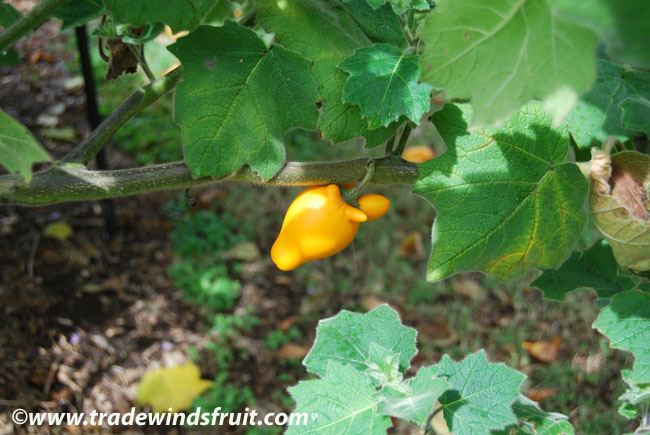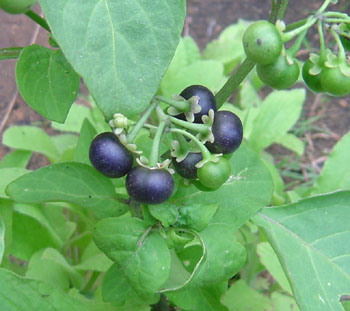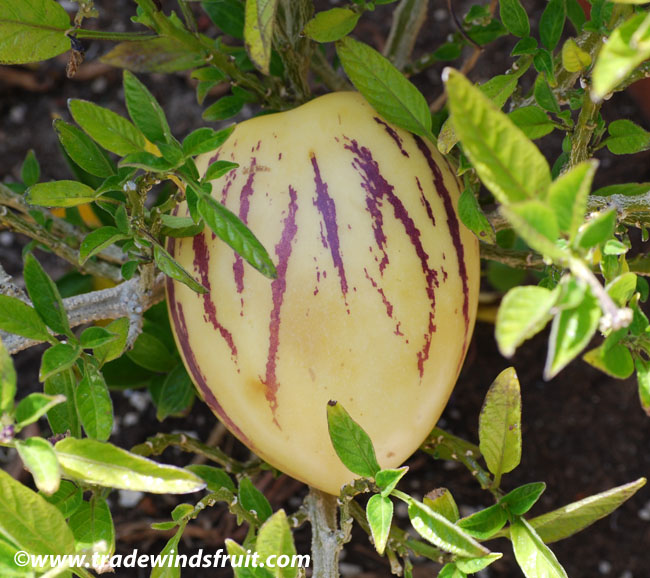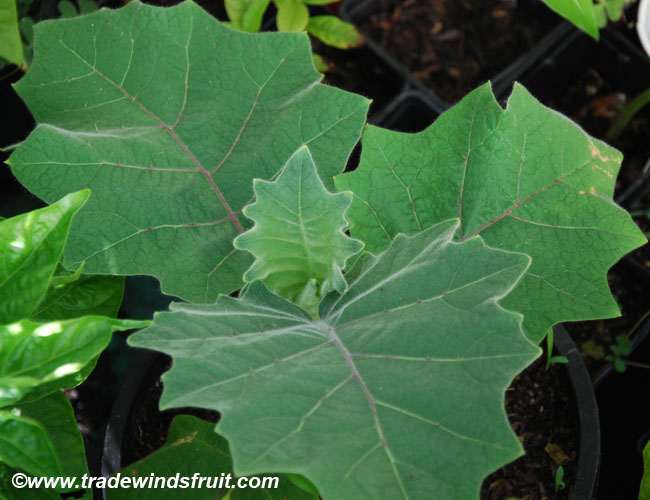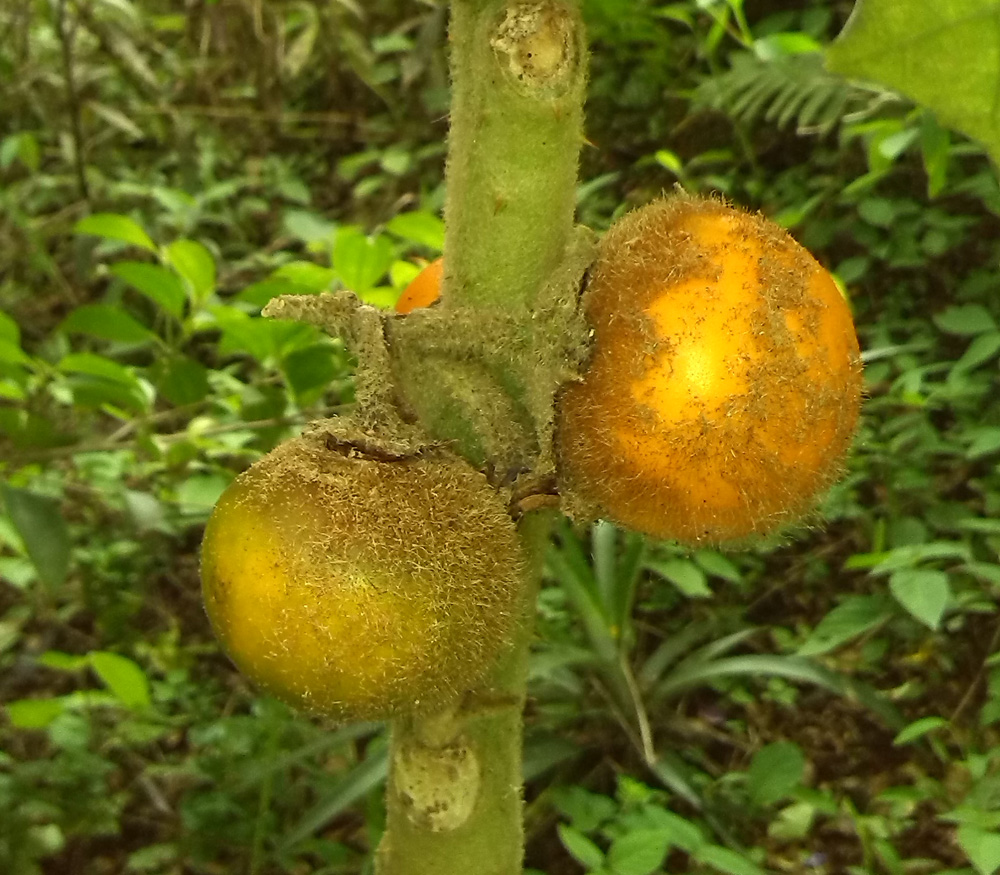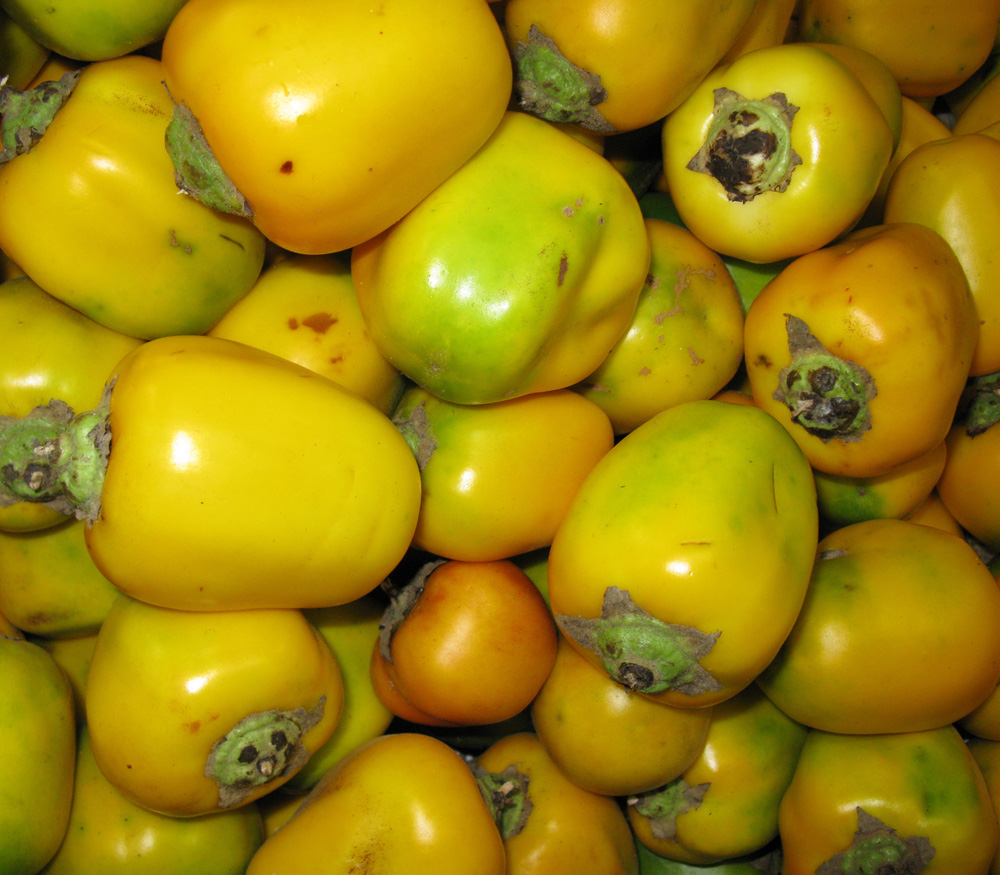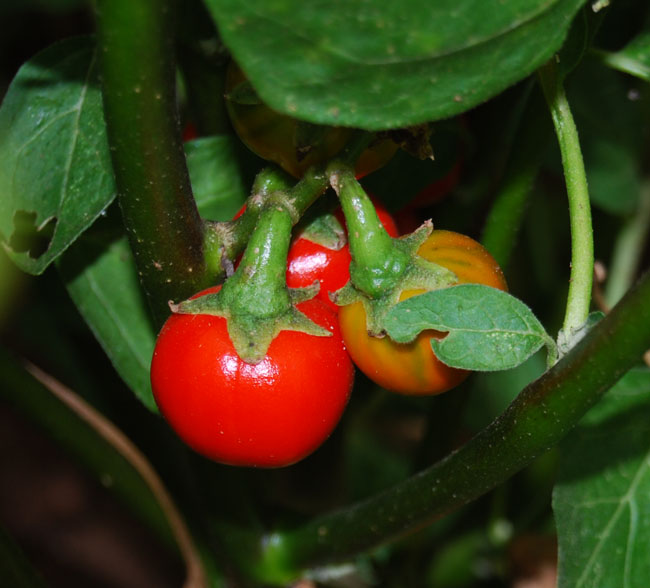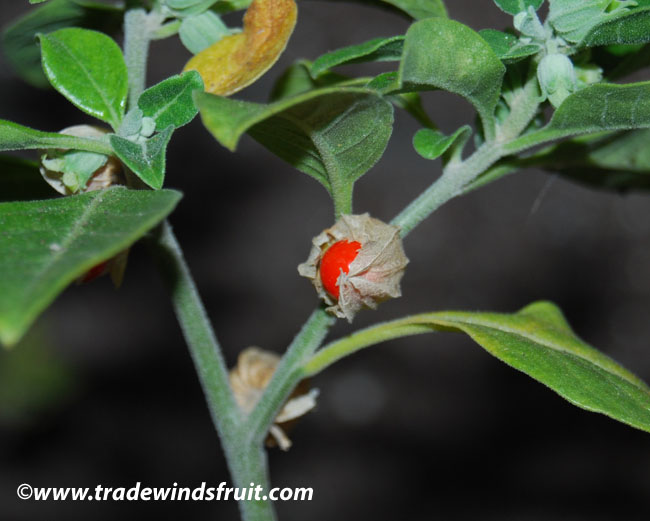- Home »
- Information »
- Cobincho Pepper
Cobincho Pepper
Capsicum exile
A rare wild pepper commonly listed as a distinct species (Capsicum exile), though it may well be a variant of another wild pepper, Capsicum chacoense. Yields small, orange-red colored fruits with a hot flavor.
Seed Availability
Seeds are not available for the Cobincho Pepper. Please visit our seed store to view current selections. Seeds were last available in January 2015.
Description
Small, shrubby growth similar to standard peppers, to 2-4 feet. The leaves are smaller than most common varieties. Flowers are also small, white, similar to C. annuum. Fruits grow to to 1/2-3/4" long, with a sort of straight, blunted and oval shape.
Hardiness
Not frost hardy. Can be overwintered in warm areas.
Growing Environment
Grows nicely in full or filtered sun. Not too picky about exacting conditions, though humidity and moderate water would seem to encourage strong growth. This species also grows fairly well indoors and is easy to overwinter for added fruit production in following years.
Propagation
By seeds, which can be quite slow and occasionally difficult to germinate.
Germination Info
The wild peppers are some of the slowest of all hot peppers to sprout. Germination is also erratic, with varying germination times for individual seeds in a single batch. Allow a minimum of 2-3 months for germination.
Start seeds in small containers from 8-10 weeks prior to the last frost date. Plant seeds approximately 1/4-1/2" deep in moist, well drained potting soil. Most standard soil mixes are suitable for pepper seeds. Soil temperature must be kept at 75-90F for proper germination. Cool soil, particularly at night can inhibit or significantly delay germination. To keep soil temperature warm, start seeds indoors, in a greenhouse and/or use a seed starting heat mat. Keep soil moderately moist, though not overly, dripping wet. Water soil when the soil surface just begins to dry. Allow proper air circulation for containers.
Optionally, seeds can be dipped in a dilute hydrogen peroxide mix (1 tsp hydrogen peroxide per cup water) for one minute to disinfect seeds prior to planting. If your soil or seed setup is susceptible to mold growth this can be useful to kill mold spores.
Once seedlings have sprouted, keep in small containers until a few sets of leaves have developed. Transplant to larger containers or outdoors. If transplanting outdoors, make sure to harden off seedlings by exposing them to only filtered sunlight for up to 1-2 weeks. Thin plants to 3-4 ft and rows to 6-10 ft.
Estimated germination time under optimal conditions: 2-4 months
Uses
Fruits can be used like standard hot peppers and have a fairly hot flavor. As it is a wild pepper and of a different species than common peppers, it also makes a popular ornamental and collector's plant.
Native Range
Native to Bolivia.

